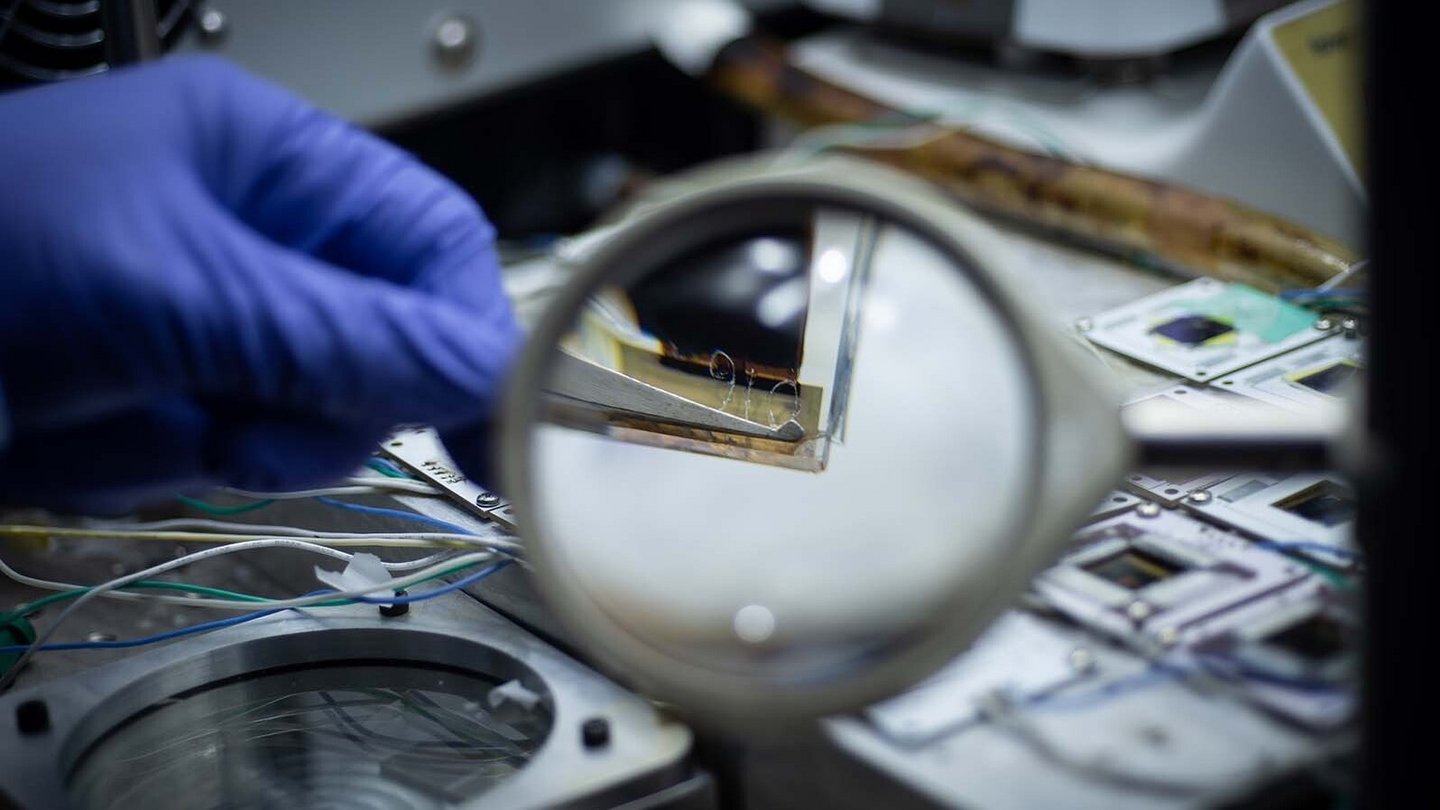Cheaper, more flexible, more efficient – these are the advantages that perovskite-based solar cells offer over the hitherto dominant semiconductor material, silicon. Even the high efficiency of the best laboratory cells of 25.7% is only slightly lower than the efficiency of silicon solar cells. The lack of durability of perovskites alone has so far slowed mass production. But now the researchers have succeeded in drastically increasing the longevity of their prototypes with an extremely thin protective layer. As they report in the journal Science, their perovskite solar cells can generate solar power for more than five years at temperatures up to 35 degrees Celsius.
So far, the perovskite layer absorbing sunlight and the underlying layer for transporting electrical charge carriers have been particularly sensitive. Therefore, Yueh-Lin Loo of Princeton University and his team added a protective layer of the elements cesium, lead and iodine, only a few atoms thick, between these two layers. The so-called two-dimensional material had a strong stabilizing effect on the surrounding layers, which are particularly important for the production of solar energy. The first observations have already shown that the efficiency of the perovskite solar cell has not decreased even after six months.
Loo and his colleagues then analyzed this surprising stability even more precisely by developing a kind of stress test for solar cells. “A durability of 30 years is desired, but we cannot test our cells for 30 years,” says Loo. Therefore, the researchers not only exposed their solar cells to artificial sunlight for a long time, but also heated them to high temperatures. up to 110 degrees Celsius Under these conditions, the aging process of solar cells could be significantly accelerated. From the collected data, Loo and his team then deduced the actual lifespan under colder, more realistic conditions.
The stress test showed that at temperatures of 110 degrees Celsius, the solar cell efficiency only dropped to around 80% of the original efficiency after more than 2100 hours. At 35 degrees Celsius, by contrast, Loo and his colleagues observed virtually no loss in performance. More precise calculations have shown that solar cells achieve an incredibly long lifespan of over five years at moderate temperatures. With new material variants and new manufacturing processes, it is therefore possible for perovskite solar cells to be able to generate solar energy with high efficiency for 20 to 30 years, according to the researchers. At the same time, the hitherto relatively low efficiency of the prototype of 17.4% could be further increased. So there is a realistic chance that in a few years, pure perovskite solar cells with more than 20% efficiency or perovskite-silicon tandem cells with up to 30% efficiency could be mass-produced.

“Bacon nerd. Extreme zombie scholar. Hipster-friendly alcohol fanatic. Subtly charming problem solver. Introvert.”






